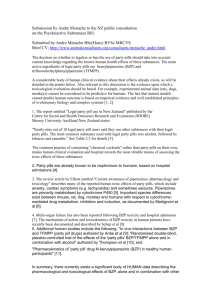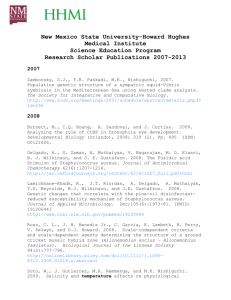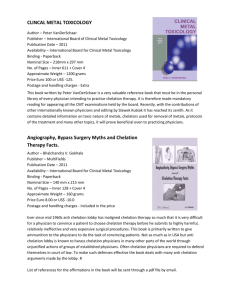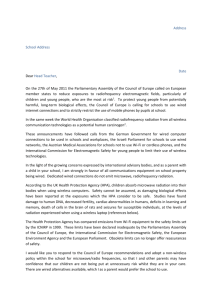Long-term outcome of repeated lead chelation therapy
advertisement
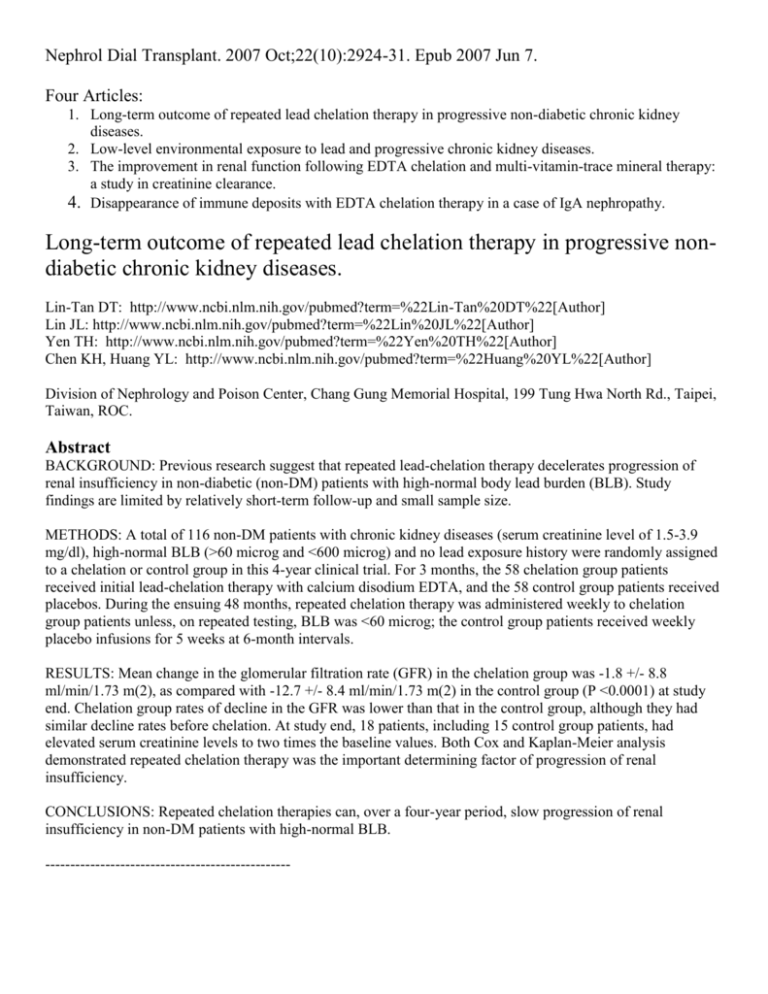
Nephrol Dial Transplant. 2007 Oct;22(10):2924-31. Epub 2007 Jun 7. Four Articles: 1. Long-term outcome of repeated lead chelation therapy in progressive non-diabetic chronic kidney diseases. 2. Low-level environmental exposure to lead and progressive chronic kidney diseases. 3. The improvement in renal function following EDTA chelation and multi-vitamin-trace mineral therapy: a study in creatinine clearance. 4. Disappearance of immune deposits with EDTA chelation therapy in a case of IgA nephropathy. Long-term outcome of repeated lead chelation therapy in progressive nondiabetic chronic kidney diseases. Lin-Tan DT: http://www.ncbi.nlm.nih.gov/pubmed?term=%22Lin-Tan%20DT%22[Author] Lin JL: http://www.ncbi.nlm.nih.gov/pubmed?term=%22Lin%20JL%22[Author] Yen TH: http://www.ncbi.nlm.nih.gov/pubmed?term=%22Yen%20TH%22[Author] Chen KH, Huang YL: http://www.ncbi.nlm.nih.gov/pubmed?term=%22Huang%20YL%22[Author] Division of Nephrology and Poison Center, Chang Gung Memorial Hospital, 199 Tung Hwa North Rd., Taipei, Taiwan, ROC. Abstract BACKGROUND: Previous research suggest that repeated lead-chelation therapy decelerates progression of renal insufficiency in non-diabetic (non-DM) patients with high-normal body lead burden (BLB). Study findings are limited by relatively short-term follow-up and small sample size. METHODS: A total of 116 non-DM patients with chronic kidney diseases (serum creatinine level of 1.5-3.9 mg/dl), high-normal BLB (>60 microg and <600 microg) and no lead exposure history were randomly assigned to a chelation or control group in this 4-year clinical trial. For 3 months, the 58 chelation group patients received initial lead-chelation therapy with calcium disodium EDTA, and the 58 control group patients received placebos. During the ensuing 48 months, repeated chelation therapy was administered weekly to chelation group patients unless, on repeated testing, BLB was <60 microg; the control group patients received weekly placebo infusions for 5 weeks at 6-month intervals. RESULTS: Mean change in the glomerular filtration rate (GFR) in the chelation group was -1.8 +/- 8.8 ml/min/1.73 m(2), as compared with -12.7 +/- 8.4 ml/min/1.73 m(2) in the control group (P <0.0001) at study end. Chelation group rates of decline in the GFR was lower than that in the control group, although they had similar decline rates before chelation. At study end, 18 patients, including 15 control group patients, had elevated serum creatinine levels to two times the baseline values. Both Cox and Kaplan-Meier analysis demonstrated repeated chelation therapy was the important determining factor of progression of renal insufficiency. CONCLUSIONS: Repeated chelation therapies can, over a four-year period, slow progression of renal insufficiency in non-DM patients with high-normal BLB. ------------------------------------------------- Page Two Am J Med. 2006 Aug;119(8):707.e1-9. Low-level environmental exposure to lead and progressive chronic kidney diseases. Lin JL: http://www.ncbi.nlm.nih.gov/pubmed?term=%22Lin%20JL%22[Author] Lin-Tan DT: http://www.ncbi.nlm.nih.gov/pubmed?term=%22Lin-Tan%20DT%22[Author] Li YJ: http://www.ncbi.nlm.nih.gov/pubmed?term=%22Li%20YJ%22[Author] Chen KH: http://www.ncbi.nlm.nih.gov/pubmed?term=%22Chen%20KH%22[Author] Huang YL: http://www.ncbi.nlm.nih.gov/pubmed?term=%22Huang%20YL%22[Author] Department of Nephrology and Division of Clinical Toxicology, Chang Gung Memorial Hospital, Lin-Kou Medical Center, School of Medicine, Chang Gung University, Taipei, Taiwan, ROC. jllin99@hotmail.com Abstract PURPOSE: To determine whether low-normal body lead burden (BLB) accelerates progressive renal insufficiency in nondiabetic patients with chronic kidney diseases (CKD). METHODS: One hundred eight CKD patients (serum creatinine between 1.5 and 2.9 mg/dL) with low-normal BLB (<80 microg) and no lead exposure history were observed for 24 months. Following the observation, 32 patients with low-normal BLB (> or =20 microg and <80 microg) were randomly assigned to chelation and control groups. The chelation group patients were given edetate calcium disodium (EDTA) chelation therapy for 3 months and repeated chelation therapy during the following 24 months to maintain their BLB below 20 mug, while the control group patients underwent placebo therapy. The primary endpoint was an increased serum creatinine level to 1.25 times the baseline value. The secondary endpoint was temporal changes in renal function. RESULTS: The primary endpoint occurred in 14 patients in the observation period. Baseline BLB was the important risk factor in determining progressive renal insufficiency. The mean glomerular filtration rate (GFR) change in the chelation group patients was 6.6+/-10.7 mL/min/1.73m(2), compared with -4.6+/-4.3 mL/min/1.73 m2 in control group patients (P <.001) at the end of the intervention period. The mean decrease in GFR per year of chelation group patients was lower than that of control group patients during the repeated chelation period. CONCLUSION: Environmental exposure to lead, even at low level, may accelerate progressive renal insufficiency of nondiabetic patients with CKD. ------------------------------------------------- Page Three Med Hypotheses. 1984 Nov;15(3):301-4. The improvement in renal function following EDTA chelation and multi-vitamin-trace mineral therapy: a study in creatinine clearance. Sehnert KW: http://www.ncbi.nlm.nih.gov/pubmed?term=%22Sehnert%20KW%22[Author] Clague AF: http://www.ncbi.nlm.nih.gov/pubmed?term=%22Clague%20AF%22[Author] Cheraskin E: http://www.ncbi.nlm.nih.gov/pubmed?term=%22Cheraskin%20E%22[Author] Abstract One of the most commonly alleged contraindications to the use of (ethylene diamine tetraacetic acid) chelation therapy is possible renal damage. In this experiment, 13 subjects with chronic degenerative disorders and with renal damage were treated with infusions that included EDTA, vitamins, mineral and oral supplements. Following 20 infusions, creatinine clearance significantly improved. This report adds credence to the findings of those physicians who have noted that EDTA is a safe and major therapeutic modality in the treatment of chronic cardiovascular diseases. The patients reported in this experiment represent a small part of a much larger group of several hundred individuals undergoing a series of tests to determine the utility of EDTA therapy in subjects with occlusive vascular disorders. ----------------------- Page Four Am J Nephrol. 1992;12(6):457-60. Disappearance of immune deposits with EDTA chelation therapy in a case of IgA nephropathy. Lin JL: http://www.ncbi.nlm.nih.gov/pubmed?term=%22Lin%20JL%22[Author] Lim PS: http://www.ncbi.nlm.nih.gov/pubmed?term=%22Lim%20PS%22[Author] Division of Nephrology, Chang Gung Memorial Hospital, Taipei, Taiwan, ROC. Abstract In this report, we describe the development of renal function impairment in a 33-year-old patient with mesangial IgA nephropathy and a history of recent gout. Increased body lead burden was identified with a positive EDTA mobilization test. The patient was treated with 1 g of edetate disodium calcium weekly for 2 months until normalization of urinary lead excretion. Improvement of renal function and proteinuria were noted. It was even more interesting to find that both immunofluorescence and electron microscopy studies of the second biopsy specimen revealed the loss of previous mesangial immune deposits. Our case demonstrated that lead may be a nonspecifically damaging factor related to the deterioration of renal function in patients with preexisting renal disease. Moreover, the disappearance of mesangial immune deposits after chelation therapy has not been previously documented. The pathogenetic basis of this observation is unknown, and its causal relationship with lead requires further elucidation. -met vriendelijke groet, R. Pahlplatz, arts Filename: 2010-10-IBCMT-4Articles.doc


